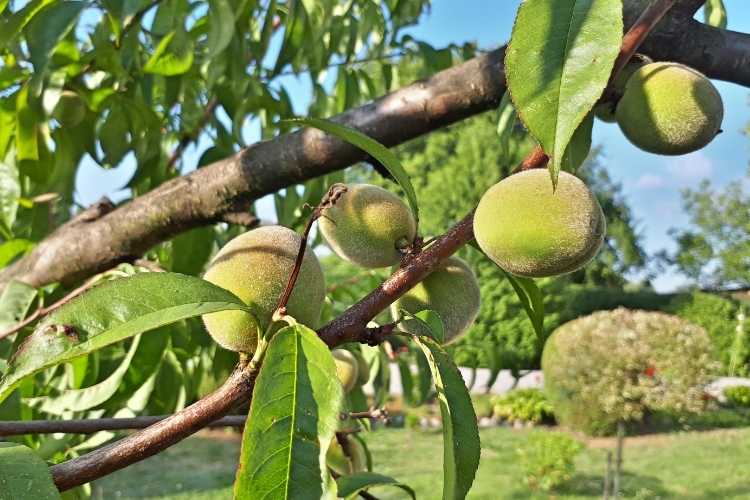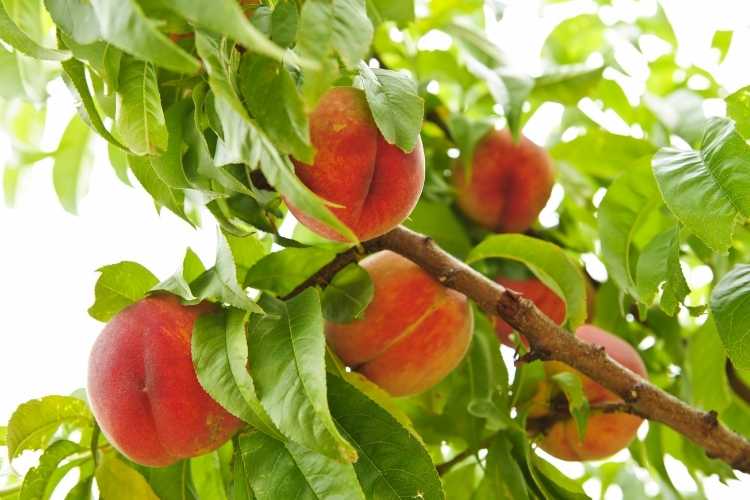10 tips on planting, growing and caring for nectarine and peach fruit trees
24th Apr 2022
Most of us will have at least one or two fruit trees in our garden. Many will have more. It doesn’t matter whether you have an orchard or a patio you can grow fruit trees successfully. And nectarine or peach trees are some of the best to plant in the UK of you want attractive looking tree which bears plenty of fruit.
Many people claim that peaches provide plenty of health benefits. I don’t know about that but what I do know is that peaches, of which nectarines are a variety, are sweet and delicious fruit which can be used in all manner of cooking or eaten straight from the branch.
If you’re looking for a new fruit tree this year, or even considering planting your own mini-orchard, why not consider a peach tree? And, if you do take the plunge, here’s some tips on getting the best from your tree.
10 tips on growing nectarine and peach fruit trees
1 The best time to plant
There are some people that will tell you that you can plant nectarine and peach trees at any time of the year. In theory, this is true but if you want your trees to really thrive, aim to plant them between November and late April. That said, if you’re planting in a container, the timing doesn’t matter as much.
These types of trees are very hardy in the UK but in very cold areas, it’s a good idea to plant them against a south facing wall which will go towards protecting them from frost.
2 Planting nectarine and peach trees in the ground
The great thing about peach and nectarine trees is that they are pretty tolerant when it comes to soil. They will thrive well in most soil conditions but it is a good idea to add a decent amount of well-rotted manure or compost for the best results.
Also when planting your fruit tree make sure that the soil is well draining. If there is a heavy clay presence then adding some rubble at the bottom of the hole will help enormously. When you put your tree in the ground, make sure that the root ball is level with the surface.
3 Planting in a pot
It is possible to plant a nectarine or peach tree in a pot. Of course, you will need to make sure you choose the right size. Typically, a 24-inch container will be good enough although some people like to use a half barrel. Just make sure that you can move it around when you need to.
You will need to place a layer of pea gravel at the bottom of the container as this ensures good drainage. Follow this with a loam-based compost but make sure you don’t fill the pot to the top. Your compost should never dry out so always keep an eye on it and water as needed.
4 Watering your peach trees
It goes without saying that growing any kind of tree is going to involve a good watering schedule and your nectarine or peach tree is no exception. After planting your tree, you will need to give it a very deep watering.
After this, for the first fortnight to three weeks, you will need to continue to heavily water the tree two times a day.
Once it is well established, you can cut this down a little but always make sure to check the tree for signs of dehydration. You’ll be able to tell as it’ll look droopy and you should keep in mind that relying on the rain isn’t always enough for these trees. Apply water to the soil and not to the tree itself.
5 Fertilising nectarine trees
Both peach and nectarine trees like to have a little additional feed compared to other types of fruit tree. Most gardeners would recommend using bonemeal and you should apply around 30oz of this for every square yard.
Subscribe to our newsletter for exclusive deals and discounts
Once applied, you will need to rake the bonemeal well into the soil, focusing particularly on the very base of the tree. However, you might also add some liquid tomato feed to the soil through the summer months to give your tree an extra boost.
6 Nectarine and peach tree pruning
The best time to prune your nectarine and peach trees is at the end of winter. You will need to cut them slightly above wood buds but only those that are well formed. Also ensure that, when pruning, you do so evenly. Nectarine and peach trees should not have a dominant stem in the middle but instead a number of well-balanced branches.

Also, when you are pruning, make sure to do this so that you encourage new fruit growth. This is achieved by removing dead branches and old fruit before thinning out the tree while ensuring that you leave at least three buds per branch.
7 Protecting your trees against frost
What’s great about nectarine and peach trees is that they generally do pretty well over the winter. It isn’t the frost during these months that causes problems. What is an issue is that these trees flower very early in spring and this makes them more prone to frost damage.
If you are growing your tree in a pot then we would recommend leaving this in the greenhouse until the last frost. For trees that are being grown in the ground, it’s best to cover them with a horticultural fleece until the weather warms up.
8 Problems with peach curl
Peach curl is one of the main issues you will have growing these kinds of trees. It is a fungal infection that sees the leaves covered in blisters that are either white or red in colour. They will also curl up, hence the name of the disease.
Protecting your tree from the rain is one of the easiest ways to prevent peach curl so using a polythene cover in wet seasons will help. It’s best to cover the tree from around December and wait until May to remove it. While this disease won’t kill the tree, it will make fruit production very unlikely.
9 Protection from birds
Birds are a common problem for these types of fruit trees and gardeners often find that their harvest is spoiled with holes caused by birds. However, there are ways you can protect your fruit from birds’ while being kind to local wildlife.
The best option is to use a cover. You can buy steel wire fruit tree covers that let in light and moisture but aren’t accessible to birds. If you don't like the appearance of these structures, it is possible to buy spray repellents which make the fruit taste bad to the birds. Just make sure to thoroughly wash them before you eat them.
10 Harvesting nectarines and peaches
Generally speaking, peaches and nectarines will be ripe between three and five months after the flowers have bloomed. But you will need to check them to make sure. You can tell when they are ready to harvest as the flesh feels softer and the fruit will be fully coloured. It’s pretty easy to remove them from the tree when they’re ripe by simply cupping the fruit in your hand and lifting it.
Be very gentle as these soft fruits bruise easily. Also be prepared that all of the fruit is unlikely to ripen at once so you may need to pick over the course of time.
We have dozens of different varieties of fruit trees fresh from the nursery ready to be packed and delivered to your door. Don’t miss out on our amazing multi-deal offers and plant your own mini-orchard today.


